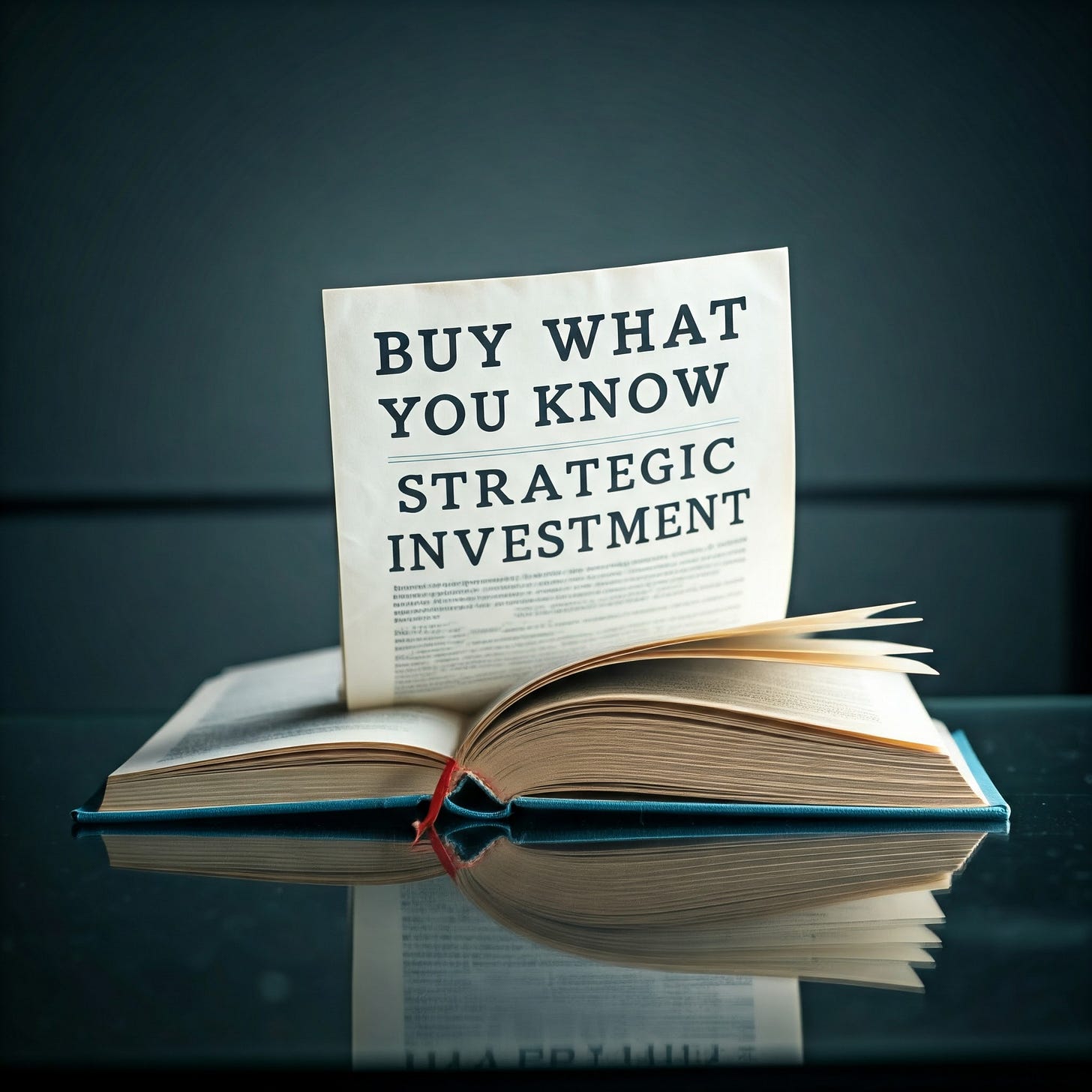Is Liking a Product Enough to Invest?
Primary Section | Article no: 2 | Pros and Cons
Many may have heard the message ‘Invest in what you know’ from social media or from someone you know. Many of us love products from brands like Apple, Titan, Britannia or Royal Enfield. But does loving a product mean the company's stock is a good investment? Does it make us good returns in the long run?
In today's write-up, let's discuss whether investing in companies you like or know a sound strategy or not, the risks associated with it, and explore the connections between personal preferences and investment decisions.
In this write-up:
The pros and cons of investing in what you know or like.
The course of action we must follow when making such investment decisions.
Dismantling and Analyzing the ‘Buy What You Know’ Investment Strategy
Insights and Pitfalls
Personal preferences may lead to biased investment decisions.
There are high possibilities that the product you like may not be the main focus of the business or its revenue & profit contribution to the overall business is minimal.
Surface observation doesn't provide a sound strategy. A deeper analysis followed by action based on facts is what makes the investment decisions sound.
Investing in companies whose products or services you like can be a sound strategy only if you study the financial reports of that company, and when studying statements, always look for interconnections between profit or loss statements, balance sheets and cash flow statements.
Deriving the circle of competence is effective. The circle of competence should accommodate a true understanding of the business. It means investing in what you know or like should be supported by the underlying principle of understanding the company by thorough fundamental analysis.
What course to follow?
If you like a product or service from a company, it doesn't necessarily mean that everybody likes that. For example, let's say you like the designs of jewellery from Tanishq— a subsidiary of Titan— and you always buy jewels from them. If you want to invest in that company, your first goal is to identify the sales, growth in sales and the company's market share in the jewellery category, you can go through Titan’s and their peer’s Income statements— pay attention to segment revenue breakdown— or annual reports ( at least the past five financial years) to gather information regarding the sales/ revenue and revenue growth. By doing so, you will find the market share of Tanishq in the Jewellery segment against its peers.
You must also understand the fact that a company like Titan is involved in multiple retail business verticals like jewellery, watches and wearables, Eyewear, Accessories, premium perfumes and many more. So, your next goal is to identify the revenue and Profit contribution of Tanishq (Jewellery business) to its parent company, Titan Ltd. Also, you've to assess the whole business. It doesn't make sense if you decide to buy stocks of Titan just because you like their jewellery business. Don't buy the whole book just to read the first chapter. Also, there are multiple brands other than Tanishq are incorporated into Titan's jewellery business. All those factors must be taken into account.
Your third and most important goal is to study the company's consolidated financial reports, such as Income statements, balance sheets and cash flow statements, to carry out a thorough fundamental analysis. Always pay attention to the footnotes. You can use various quantitative formulas to assess metrics such as profitability, liquidity, leverage, efficiency, growth, price multiples and other advanced multiples. The results from the above can be compared with their competitors to determine the performance for that period and how much the stock is priced relative to their peers. This type of Valuation technique is known as Relative Valuation. It's easier than other valuation techniques and also one of the most valuable techniques.
Your last goal is to avoid overpaying. Often most investors buy good stocks but at higher prices. This limits their ability to maximize returns. There are possibilities that the stock price may not reach a new high if bought when it's too high. So the best we can do is learn valuation and determine its intrinsic value with a margin of safety. If you find it complex, at least you can do the relative valuation.
Things to remember
While investing in companies whose products or services you personally like can be a starting point, it should never be the sole basis for investment decisions.
Personal preferences may guide you toward potential opportunities, but thorough research, financial analysis, and valuation are critical to determining whether the stock is a sound investment.
Beginners can start by reading annual reports, focusing on revenue and profit trends, and comparing these with competitors. Simple metrics like price-to-earnings (P/E), debt-to-equity ratios, Return On Equity, PAT margin etc can provide initial insights into a company’s performance
Once you learn the basics, you can start learning and practising valuation techniques from Aswath Damodaran’s YouTube channel to value the stocks. So that you never overpay.
By blending your knowledge with fundamental analysis, you can make more informed and confident investment choices than an average can make. Remember, successful investing is about facts and strategy—not just feelings. Ready to take the next step? Let’s unlock the secrets of value investing together!
⚠️Disclaimer:The Value Investor's Lab is dedicated to providing educational content to help readers understand the principles of value investing. We do not promote or recommend specific companies, securities, or investment strategies. Readers are encouraged to consult registered and approved financial advisors for personalized investment decisions.








